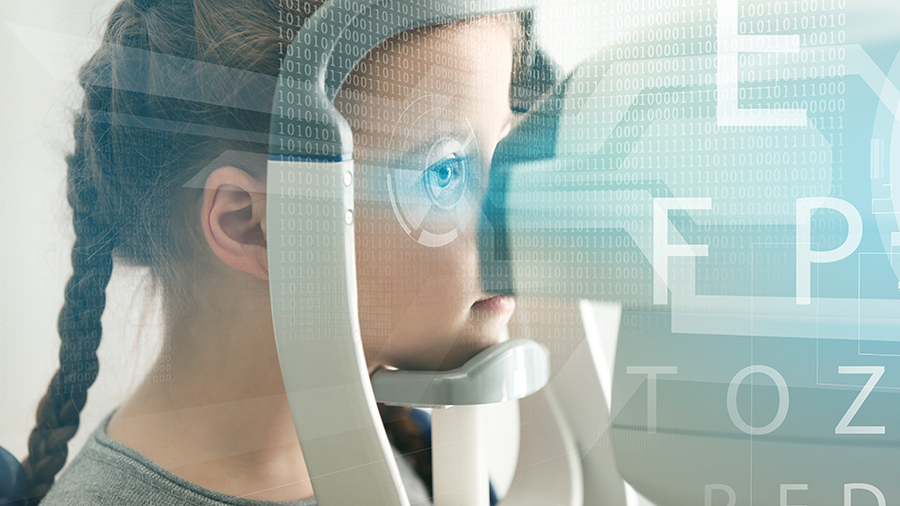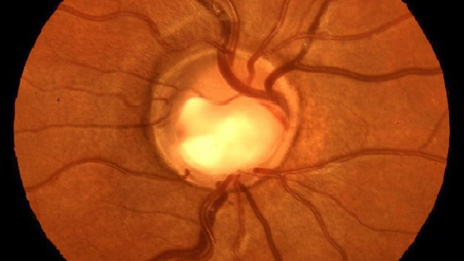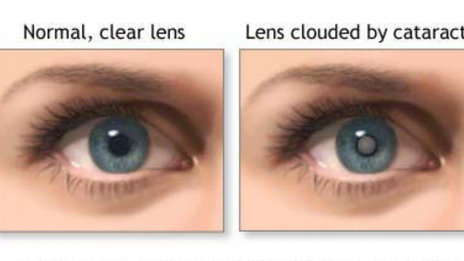
Worried that your child might be short-sighted?

It’s never too early to start managing this increasingly common eye condition
Short-sightedness, otherwise known as myopia, is an increasingly common eye disorder that can affect very young children and then continues into adult life. The condition can’t be cured but it can be managed very successfully.
Recognising the symptoms and getting a professional diagnosis from your optician is the first step to effective management before your child’s eye reaches full maturity in young adulthood.
Our team of experts can help identify myopia at an early age and provide you with a range of solutions that can limit its development.
In this blog we take a closer look at the symptoms of short-sightedness, as well as the ground-breaking technologies, in both contact lenses and glasses, that can make a big difference to managing the condition.
Is short-sightedness a common diagnosis?
Yes, increasingly so. If you think your child’s short-sightedness is a unique problem, you’re far from alone. According to the World Health Organisation it’s a condition that is now reaching pandemic proportions as more and more people are diagnosed with myopia. And according to lens specialists HOYA, an estimated 5 billion people, half the global population, could be affected by it by 2050.
What are the symptoms of short-sightedness?
For young children affected by the early stages of myopia, they may not know what normal eyesight looks and feels like. So, if you haven’t yet taken your child to the opticians, the NHS has identified these as the typical indications to look out for:
- Difficulty reading words from a distance - such as the whiteboard at school
- Needing to sit close to the TV or computer, or holding a mobile phone or other device close to your face
- Getting headaches
- Rubbing your eyes a lot.
Is short-sightedness hereditary?
Yes. It would appear to be the case. Recent research has shown that there’s a 50%, or 1 in 2, chance of children inheriting the condition if both parents have myopia, and a 33%, or 1 in 3 chance, if one parent has the condition.
Why is early myopia management so important?
Early diagnosis and regular eye tests are important because short-sightedness at an early age brings with it a number of potential ancillary conditions in adult life, including:
- Glaucoma - increased pressure inside the eyes
- Retinal detachment - this is where the retina comes away from the back surface of the eye
- Mypoic maculopathy - this is a degenerative condition where vision fades away and can result in blindness.
Regular eye tests not only assess the metrics of the condition, but also look at the overall eye health to identify early signs of potentially developing other conditions.
Is there a cure for myopia?
Unfortunately, there isn’t. But there is a range of new myopia technologies that can play a key role in limiting the condition at an early age to prevent significant development in teenage years and early adulthood. In this section we’ll talk you through the latest lenses that can be prescribed, either as spectacles or as contact lenses.
What does a prescription for myopia contact lenses or glasses look like?
In optometry, myopia is measured as a negative power in -0.25 steps in dioptres. Your optician will explain this to you when producing the prescription, which can be applied to both spectacles or contact lenses.
Do I have to pay for a children’s eye test?
All children under the age of 16, as well as those in full-time education, are entitled to an NHS-funded eye test.

Treatment Options for Myopia / Short-Sightedness
Soft contact lenses FOR MYOPIA CONTROL
Designed for young eyes in the early stages of growth, soft contact lenses are daily disposable lenses designed to reduce the progression of myopia in children. These are worn just in the day for a minimum of six days a week. The most popular brand is MiSight® by Coopervision.
Orthokeratology and Ortho-K lenses
Orthokeratology is a process designed to reshape the surface (cornea) of the front of the eye, thereby limiting the progression of myopia.
Ortho-Keratology (Ortho-K) has been around for many years. It is a rigid contact lens designed to gently reshape the eye to correct myopia, whilst the patient is asleep. The lenses are removed on waking, providing clear vision during the day, leaving the patient free from glasses or contact lenses. Ortho-K is fully reversible. When wear is stopped, the patient returns to their previous optical prescription.
The fitting of Ortho-K lenses requires special training and advanced optical equipment to ensure the perfect lens for each patient. Our Optometrist, Chris - with over 30 years experience of fitting contact lenses, and a Certified Eyedream fitter- can guide you through the process of enjoying Ortho-K.
Ortho-K lenses - a quick summary:
- Hard contact lenses worn overnight.
- Lens-free during daytime.
- Ideal for children who frequently enjoy swimming and water sports where glasses and soft contact lenses may not be suitable.
MiYOSMART lenses from HOYA
With this latest breakthrough in lenswear from HOYA, MiYOSMART is an innovative spectacle lens which uses its award-winning Defocus Incorporate Multi Segment (DIMS) technology to curb myopia progression. It was this ground breaking technology that won HOYA ‘The Lens Award’ at the Opticians Awards 2022. Made with a thin, light and impact-resistant material, MiYOSMART lenses also have a UV coating to protect eyes from blue light.
Clough Opticians - 21st century technology, decades of experience
For over 60 years we’ve been helping the people of Bolton, and further afield, see clearly by using the latest technologies available at the time to provide them with the best eyecare solutions. With short-sightedness affecting more and more people, we’re proud to be early adopters of the very latest contact lens and spectacle technologies coupled with expert diagnosis from our team of optometrists.
The first step to diagnosis and effective management starts with an eye test where we’ll not just assess your child for the condition, but look at the overall health of their eyes, and identify the lens prescription that suits them the best. We can also demonstrate these products to you, and explain their individual features and benefits.
So don’t delay. Let’s take a closer look. Click here to book your appointment today.

